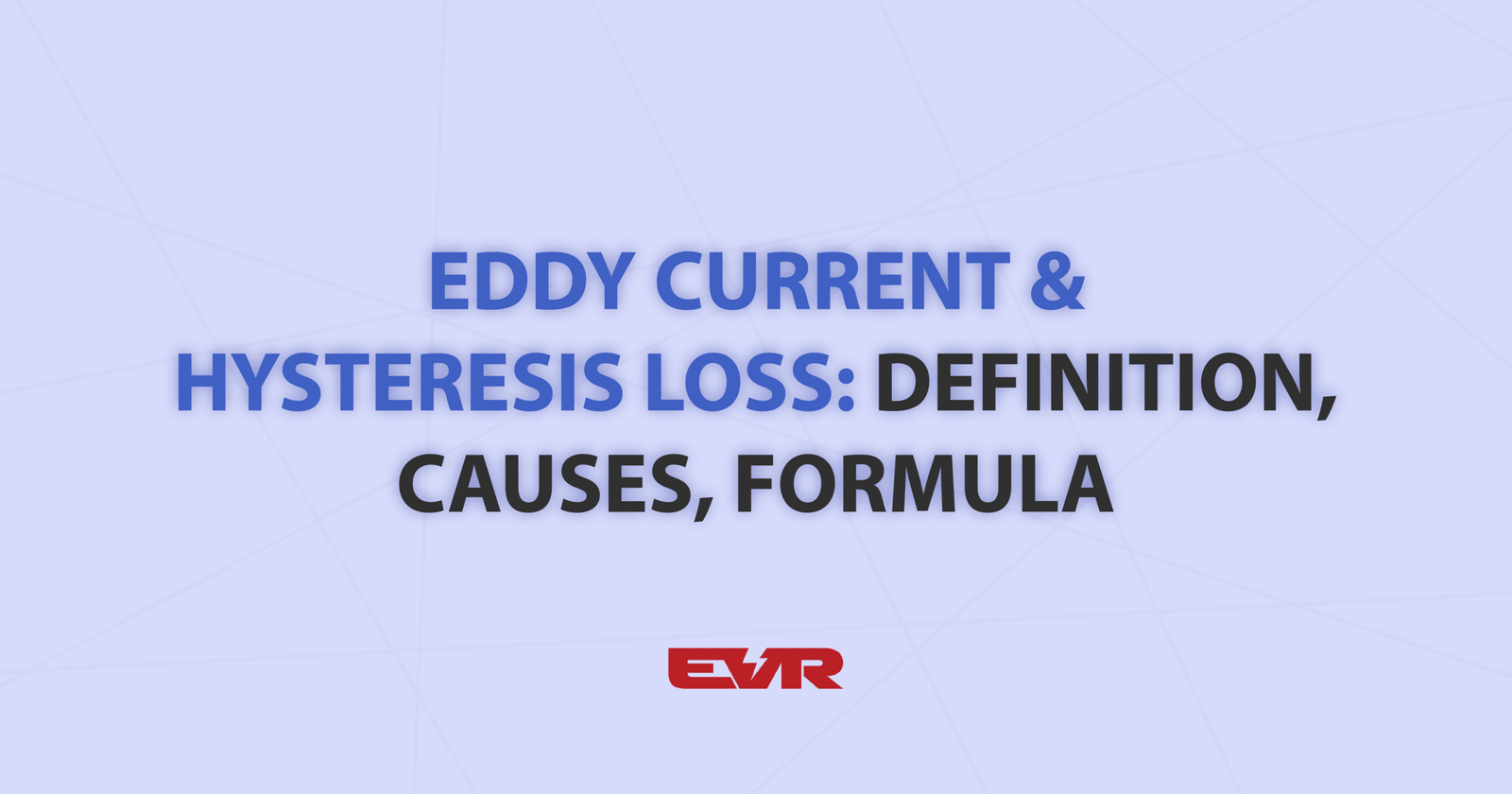Have you ever noticed that a transformer feels warm even when it’s not running at full load? That heat isn’t just random, it’s a sign that some of the electrical energy is being lost inside the transformer.
Not all the power that goes in comes out as useful energy. A part of it turns into heat due to what engineers call core losses mainly eddy current loss and hysteresis loss. These two are the biggest reasons transformers waste energy and become less efficient over time.
That’s why EVR Power designs high-quality Distribution Transformers built with precision-engineered cores and top-grade materials to keep energy losses low and performance high.
What Happens Inside a Transformer
A transformer may look like a simple metal box, but inside, it performs one of the most important jobs in electrical systems transferring electricity safely and efficiently from one circuit to another.
Here’s how it works:
- Two Coils, One Purpose: Inside a transformer, electricity passes through two sets of copper coils, called the primary and secondary, to move power safely from one circuit to another.
- Magnetic Core: These coils sit around a magnetic core, usually made from laminated steel, which guides the magnetic field.
- Magnetic Field in Action: The electricity in the primary coil generates a fluctuating magnetic field, which transfers energy to the secondary coil without direct contact.
- Where Losses Begin: Every time the magnetic field changes direction, tiny circular currents and molecular movements happen inside the core and that’s where eddy currents and hysteresis losses start.
In every Power Transformer, managing how this magnetic field behaves is key to improving performance and reducing energy waste.
What Is Eddy Current Loss? (Explained Simply)
Every time electricity flows through a transformer, its magnetic field keeps flipping directions. These quick changes make tiny loops of current form inside the metal core called eddy currents. They don’t help the transformer work; they just heat it up and waste energy.
Think of it like stirring water when you see those small swirls? They use energy but don’t move the water forward. That’s what eddy currents do inside the core.
To reduce this heat waste, EVR Power uses thin laminated sheets in its Converter Transformers, which stop these loops from spreading and help the transformer run cooler and more efficiently.
Here’s a simple formula engineers use to measure it:
Pe = K × B² × t² × f² × V
Don’t worry about the math, just remember this:
- Thicker metal = more loss.
- Thinner sheets = less heat.
That’s why EVR Power builds its Isolation Transformers with high-quality thin laminations that keep energy where it belongs in your power line, not as wasted heat.
What Is Hysteresis Loss?
Inside a transformer, the magnetic field keeps changing direction. Each time it does, the tiny magnetic particles in the iron core flip too and that constant flipping uses energy, known as hysteresis loss.
It’s like bending a paper clip again and again. It warms up because energy is wasted with every bend. The same thing happens inside the transformer core.
EVR Power’s Harmonic Mitigating Transformers use smart core materials that handle these magnetic changes smoothly, keeping energy loss and heat to a minimum.
Here’s the simple formula engineers use:
Ph = η × B¹.⁶ × f × V
Where:
- η is the material constant
- B is magnetic field strength
- f is the frequency of AC current
- V is the volume of the core
The rule is simple, higher frequency or stronger magnetic fields cause more losses. That’s why EVR Power controls both through advanced core design and precise engineering.
Why Transformers Lose Energy
Even small design or material issues can make transformers waste more energy than necessary. Understanding what triggers eddy current and hysteresis losses helps prevent overheating, improve efficiency, and keep your transformer running smoothly.
- Thick core sheets: Thicker laminations let more eddy currents form.
- Poor insulation: Gaps between laminations increase energy loss.
- Low-quality core material: Cheap iron or steel causes higher hysteresis loss.
- Unstable voltage: Frequent voltage changes stress the magnetic core and increase losses.
Keeping the voltage consistent can protect the transformer and make it run more efficiently over time. Using a Servo Stabilizer or Automatic Voltage Regulator helps reduce stress on the transformer and minimize energy waste.
How EVR Power Keeps Transformers Efficient
Even small energy losses inside a transformer can add up over time, making it heat up and work harder than it should. EVR Power tackles this with smart design and top-quality materials. Here’s how:
- High-grade CRGO steel cores: Reduce both eddy current and hysteresis losses.
- Precise lamination thickness: Prevents unnecessary energy waste.
- Cool under load: Transformers stay efficient and reliable even during heavy use.
- ISO-certified quality: Every unit goes through rigorous testing to ensure top performance.
By focusing on these details, EVR Power ensures every transformer is energy-efficient, durable, and built to last.
Small losses, big impact: Even tiny improvements in design can save energy and extend transformer life.
Curious to see how these transformers work in real life? Check out EVR Power’s range of efficient transformers at evrpower.com and see the difference smart design makes.
FAQs
1. What are the two main core losses in a transformer?
Eddy current loss and hysteresis loss both convert some electrical energy into heat inside the core.
2. How do we reduce these losses?
Use thin laminated cores, high-quality steel, and stabilizers to keep voltage steady.
3. Do EVR Power transformers have low losses?
Yes, EVR Power’s Power Transformers and Isolation Transformers are designed with precision cores to minimize energy waste.
4. Why do transformers heat up?
Because small energy losses, mainly eddy current and hysteresis, turn electricity into heat.
5. Can using voltage regulators help reduce transformer losses?
Yes, Servo Stabilizers and Automatic Voltage Regulators help maintain steady voltage, lowering core stress and energy loss.


0 Comments